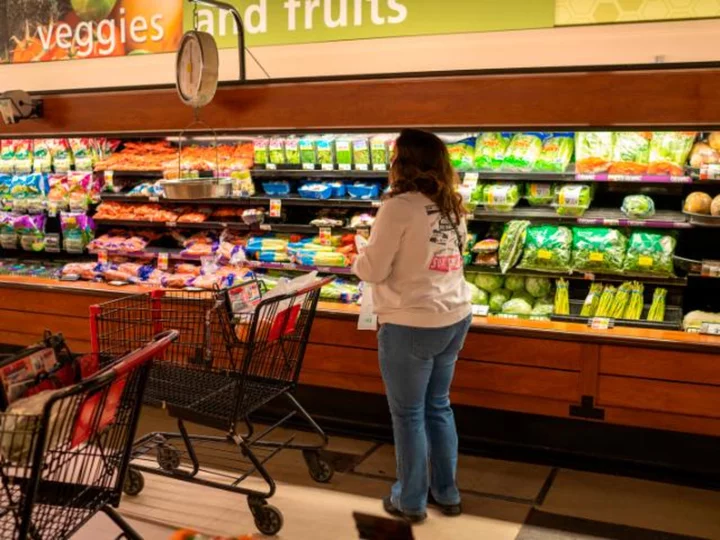Grocery prices continued to fall last month, even as restaurant meals got more expensive, according to data released Wednesday by the Bureau of Labor Statistics.
From March to April, grocery prices ticked down 0.2%, with many major food groups marking sharper declines. Dairy prices fell 0.7%, thanks to a 2% decline in milk prices, which was the biggest drop in that category since February 2015. Together, fruit and vegetable prices fell 0.5%, and prices for meat, poultry, fish, and eggs dipped 0.3%.
Other food items, including cereal and bakery products, got a bit more expensive last month. And menu prices increased by 0.4%, driven up by limited-service restaurants like fast casual and fast food joints. Those menu prices went up by 0.6%.
Shoppers started seeing relief in the grocery store in March, when grocery prices fell for the first time since September 2020.
But it's still been an expensive year for food shopping. In the year through April, food prices went up by 7.7%, with grocery prices jumping 7.1% and menu prices increasing 8.6%. Food outpaced prices overall, which rose 4.9% throughout the year.
Restaurants have been raising menu prices to cover their own costs and pad profits. For a while, menu increases were rising at a slower rate than grocery prices, and restaurants made the case to customers that they were getting a deal. Sales went up, even as people cut back. But now, that may start to change.
"We are seeing, in some places, resistance to pricing, more resistance than we saw at the outset," said McDonald's CEO Chris Kempczinski during an April analyst call discussing the company's results in the first quarter. Still, sales at McDonald's US locations open for at least 13 months grew 12.6% in the quarter, driven in part by menu price increases.
Food prices have been soaring due to a number of factors. Extreme weather, from droughts to flooding, has been hurting crops and reducing supply. The war in Ukraine has impacted grain and other prices. Avian flu has constricted egg supply. And all of these disruptions, plus others, have provided cover for food companies to raise prices even above what their rising costs would dictate.
In the year through April, some items got much more expensive. Flour, for example, went up 17.8%. Bread prices rose 12.6%. And eggs got 21.4% pricier, and margarine spiked 23.8%.
Others saw more moderate increases. Ham got 6.5% more expensive, poultry prices rose 5%, and fish and seafood rose 2%.
And some items got cheaper over the course of the year: Pork prices went down 2.2%, with bacon falling 8.9% and fresh fruit declining 1.8%.
Prices in April
Even though prices food prices overall have been high this year, April was an easier month for shoppers.
From March to April, adjusted for seasonal swings, many items got slightly less expensive.
Milk, as previously mentioned, fell 2%. Meats, poultry and fish together fell 0.2%, pork fell 1.2% and hot dogs went down 2.9%. Eggs dropped 1.5%, after huge increases earlier this year. Fish and seafood dropped 0.7%, and bread prices fell 0.3%.
Citrus fruit prices dropped 2.7% and tomatoes got 2% less expensive.
Still, some items did get pricier last month.
Flour went up by 0.5%, uncooked beef roasts got 1.5% pricier, and ham prices went up 2%. Poultry rose 0.6%. Fresh vegetables ticked up 0.3%, with lettuce rising 3.5%.

